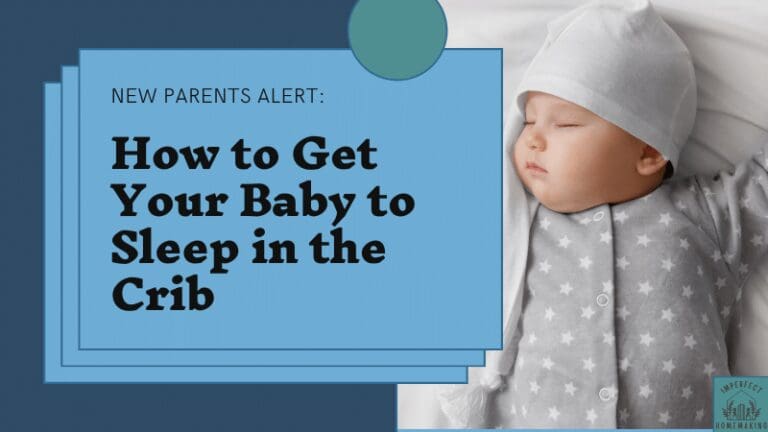What To Look For In A Bassinet: 5 Sleep Essentials
You may have heard me talk about safe sleeping spaces for children quite a bit!
Bassinets and cribs are the most popular safe sleeping spaces today (AAP-approved, too). Now, if you’ve got your heart set on getting a cute and functional bassinet, it helps to know what to look for in a bassinet that fits your family’s needs.
So, let’s go through that.
I’ll explain the difference between traditional and modern bassinets, and the features that they offer. I’ll also explain the criteria I used to select the bassinet for my Fiona, including portability, safety, comfort, and (finally) budget.

Table of Contents
Types of Bassinets You Can Choose From
Did you know that bassinets from those days were made of wicker? They were called wicker bassinets or wicker cradles. They were easy to move around, lightweight, and didn’t occupy too much space at home.
Today’s improved bassinets are also just as compact, and these enhanced versions are more durable and built for convenience. Here are the types of bassinets you can choose from:
1. Traditional Bassinets

The wooden wicker style and the aesthetic is all nostalgic! My mom would have adored this, just so you know.
- Beyond nostalgia, these lightweight bassinets are built for comfort with portability and ease of use in mind.
- These bassinets also have more modern mesh versions with lights, sounds, and a removable canopy for adjustable comfort.
2. Portable Bassinets

If you value portability above all else (travel on your mind, perhaps?), you can specifically look for portable bassinets that maximize convenience when you are on the go.
- These types of bassinets are foldable and are built to occupy the least amount of space possible.
- While you cannot expect storage in such compact sleep spaces, these are great for travel, in-law visits, or for short naps.
3. Bedside Bassinets

These are my personal favorites.
One main reason why my husband and I wanted a bassinet is because our Fiona was a fussy sleeper who would often wake up at night wanting comfort.
- So, this is where bedside bassinets help. They help keep your baby close while still sleeping in a safe sleep environment.
- It’s also great for breastfeeding at night. You can find options with storage, wheels, and lots more.
What to Look for in a Bassinet: 5 Essentials You Cannot Miss
When it comes to purchasing baby stuff, it’s good to have a checklist prepared. But, I understand that it’s not always obvious what to put on that checklist. So, here are some essentials you should look for in your bassinet:

1. Meets Safety Standards
Bassinets, cribs, and other products for babies all pass through CPSC standards, among more, before reaching the end consumer (standards might be different in your country). You only need to look for the specific labels to stay aware of the certifications and the standards.
- But there is one particular instance where you should always double-check for these standards – when you buy second-hand!
- I’m all for reusing, dear parents. It’s just that before you consider buying second-hand, you need to check if that bassinet has been recalled.
- This helps you avoid purchasing unsafe products for your child. If you notice damage or unsteady bases, I’d recommend that you avoid it.
Recalled?
This is when the manufacturer or a governing body issues an immediate return for the product because they’ve found a fault in it.
2. Size and Mobility
We choose bassinets over cribs for their compactness and portability. So, it helps to pay attention to the amount of space it occupies in your room or nursery.
- If you plan to get a bassinet just for travel, it’s always good to go for something foldable. You don’t want to lug around a bulky bassinet all around the airport with your kids and your bags.
- You can also find one with wheels for better mobility.
3. A Good Mattress
So, the mattress situation for bassinets is not as straightforward as it is for cribs. With cribs, there’s a standard size, which makes it easier to get fitted mattresses that leave no gaps.
- But because bassinets come in different sizes, finding the perfect fit can be a bit of a challenge if you purchase a mattress separately.
- It’s always better to get the mattress with the bassinet for that tight fit, preventing dangers like entanglement and SIDS in children.
But, if the bassinet’s mattress is not as good as you’d like it to be, check out my bassinet mattress guide, where I also list out my top 3 best bassinet mattresses for a comfortable sleeping environment.
Always inspect your mattress for firmness and ensure that there are no rounded edges. You can even invest in breathable mattresses for extra comfort.
4. Quality
- When you’re doing your quality check for bassinet safety, inspect its base first. Apply a bit of pressure and check for sturdiness.
- Another common issue with bassinets is wobbliness. So, test out its stability and see if it can handle your baby’s weight. If you are purchasing a rocking bassinet, check for smoothness.
- Also, inspect the portability features. If you’re eyeing a folding type, make sure the folding and unfolding are smooth and easy. The same for wheels! Move it around and check its durability.

5. Storage, Cleaning and More
While it isn’t essential, it’s always nice to have a storage section in the bassinet, just for a convenient place to keep toys, diapers, and more. I, personally, prefer ones with storage, so if that’s something that interests you, consider sturdy storage options.
- There are also bassinets with lights, sounds, rocking, and vibrations for a baby’s comfort and entertainment.
- But rocking and vibrations are often a hit or miss (my neighbor’s baby absolutely hated the rocking). So, consider them carefully before you purchase.
- It’s also worth choosing bassinets that are easy to wipe down and clean in case of diaper leaks, spit-ups, and more. You can also consider ones with in-built breathable mesh sides for more bassinet comfort.
Deciding on a Budget For Your Bassinet
Your bassinet can be used for a maximum of 4 or 6 months, and they come with weight limits too. Beyond that, you’ll have to switch your baby to cribs. No ifs or buts.
- That’s why it helps to find budget-friendly bassinets and not spend too much on something that you’ll set aside really soon. With that being said, quality is also crucial.
- Most quality bassinets today that have storage, canopies, and more start at $99 and go upwards. You can also find small, travel-friendly bassinets for even less.
Do keep this in mind before you set a budget.
Concluding on How to Choose a Bassinet
When you choose a bassinet, know how much space it occupies in your room, and how easy it is to move it around, and pay attention to quality details like base sturdiness, stability, and smooth movements.
If you are buying a bassinet online, always go through user reviews and recommendations. And not just those top one or two reviews, mind you! Go through the 4-star, 3-star, and more reviews to find common concerns in your chosen bassinet to know how good the quality is.
Finally, set an appropriate budget for your bassinet and know that you’ll use it only until your baby turns 4 to 6 months old.
Hope this helps, dear parents! See you next time.






